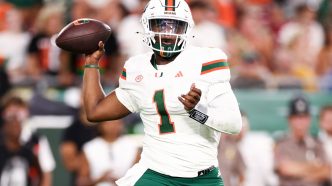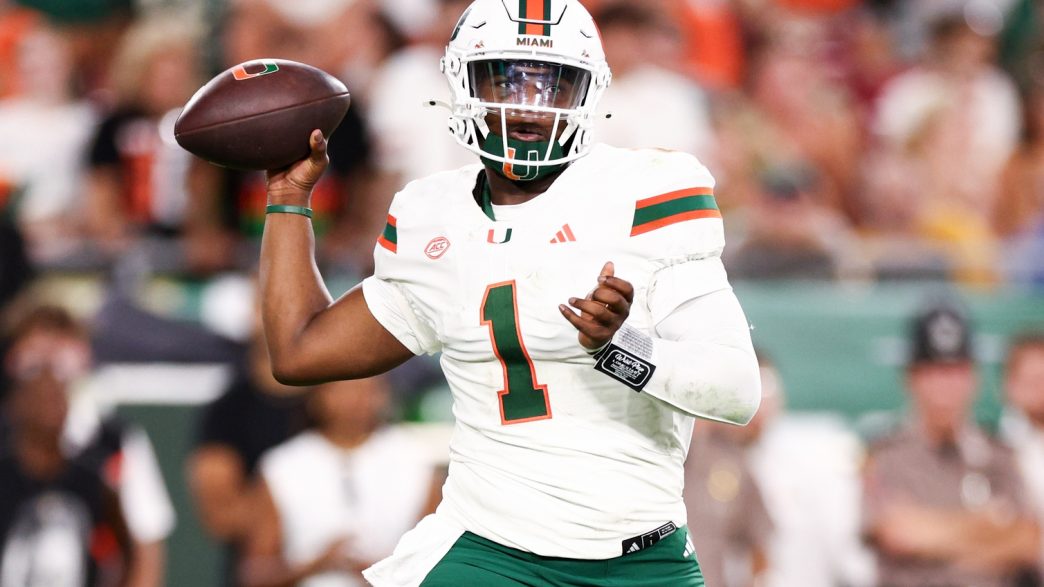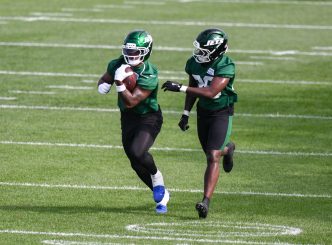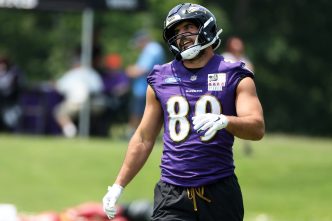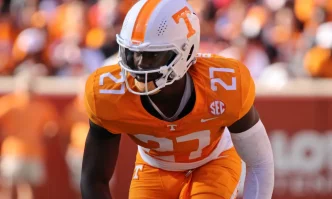The Titans’ 2024 season was a low point, marked by offensive struggles and quarterback instability. Second-year quarterback Will Levis, a 2023 second-round pick, failed to solidify himself as the long-term answer, battling injuries and inconsistent play before being benched in favor of veteran Mason Rudolph. With new general manager Mike Borgonzi and head coach Brian Callahan—a former offensive coordinator with a track record of developing quarterbacks like Joe Burrow—the Titans were poised to address the quarterback position with their top pick.
Cam Ward, a Heisman Trophy finalist in 2024, emerged as the consensus top quarterback in a relatively weak 2025 draft class. Ward’s college career spanned three programs—Incarnate Word, Washington State, and Miami—where he showcased his dynamic arm talent, mobility, and ability to elevate offenses. In his final season at Miami, he set single-season program records with 4,313 passing yards and 39 touchdowns, earning praise for his deep-ball accuracy and clutch playmaking.
Why Ward?
The Titans’ decision to select Ward was driven by their need for a quarterback who could transform their offense, which ranked among the league’s worst in 2024, particularly in the vertical passing game (only 43 passes of 20+ yards, tied for sixth-lowest in the NFL). Ward’s ability to stretch the field with precise deep throws (12 TDs to 1 INT on 20+ yard passes) aligns perfectly with Callahan’s offensive philosophy, which emphasizes explosive plays. Additionally, Ward’s experience adapting to new systems and teammates across multiple colleges suggests he can handle the transition to the NFL and connect with Tennessee’s retooled roster, including veterans like Calvin Ridley and Tyler Lockett.
Callahan highlighted Ward’s intangibles, noting, “He’s got a chip on his shoulder… His ability to connect with all of them was incredibly impressive.” The Titans also valued Ward’s fit in their system over other top prospects like Colorado’s Shedeur Sanders, who surprisingly went undrafted in the first round, and non-quarterback talents like Travis Hunter and Abdul Carter.
Analysis
Ward’s selection is a high-upside gamble for a franchise in need of a spark. His strengths—arm strength, off-platform playmaking, and leadership—make him a potential cornerstone for the Titans. His 2024 performance at Miami, where he thrived under pressure, suggests he can handle the spotlight of being the No. 1 pick. Callahan’s experience coaching quarterbacks like Peyton Manning, Matthew Stafford, and Burrow bodes well for Ward’s development, as the coach can tailor the offense to maximize Ward’s strengths while addressing his weaknesses, such as occasional recklessness with the ball (10 interceptions in 2024).
However, the pick is not without risks. Ward’s unorthodox journey through three colleges raises questions about his consistency in a stable NFL environment. Some analysts, like
@PFF_Nicky on X, gave the pick a harsh “D-” grade, arguing that Ward’s flaws (e.g., inconsistent decision-making under pressure) make him a risky choice at No. 1, especially in a draft class lacking transcendent quarterback talent. Others, like
@ArenaFanatic, gave the pick an “A,” praising Ward as the best quarterback available and a necessary move for a team desperate for a franchise signal-caller.
The Titans’ decision to stick with the No. 1 pick rather than trade down also merits scrutiny. With roster holes at wide receiver, pass rusher, and offensive line, trading back could have netted additional draft capital to address multiple needs while still landing a high-upside player like Sanders or a non-quarterback star like Hunter. However, Borgonzi’s comments about building through the draft and Callahan’s insistence on finding the right quarterback suggest the Titans prioritized Ward’s potential over a broader roster rebuild.
Impact and Fit
Ward steps into a Titans offense with some pieces in place but significant gaps. The additions of Ridley and Lockett provide reliable targets, but the loss of DeAndre Hopkins and Treylon Burks’ injury concerns highlight the need for more playmakers. Tennessee’s offensive line, while improved with 2024 first-rounder JC Latham, remains a work in progress, which could challenge Ward early. Defensively, the Titans lack a dominant pass rusher, putting pressure on Ward to deliver points in a competitive AFC South.
If Ward develops quickly under Callahan, he could elevate the Titans’ offense and make them competitive by 2026. His deep-passing ability should open up the playbook, creating opportunities for Ridley and Lockett while forcing defenses to respect the run game. However, if Ward struggles to adapt or the Titans fail to surround him with talent, the pick could haunt a franchise that hasn’t had a stable quarterback since Steve McNair.
Grade: B
The Titans’ selection of Cam Ward earns a solid “B” grade. Ward represents the best quarterback option in a thin class, and his fit in Callahan’s system is undeniable. His ability to make big plays and connect with teammates addresses Tennessee’s most glaring need. However, the grade is tempered by the risks associated with Ward’s unconventional path and the opportunity cost of not trading down to acquire more picks. The success of this pick hinges on Callahan’s coaching and the Titans’ ability to build around Ward in the coming years.
What’s Next?
With seven remaining picks in the 2025 draft, including No. 35 in the second round, the Titans have opportunities to support Ward. A wide receiver (e.g., Ohio State’s Emeka Egbuka) or a pass rusher (e.g., Texas A&M’s Nic Scourton) in Round 2 could address critical needs. The Titans may also explore trading Levis, who is unlikely to remain as a backup, to recoup draft capital. For now, the focus is on Ward, whose development will define the Titans’ trajectory and Callahan’s tenure.

